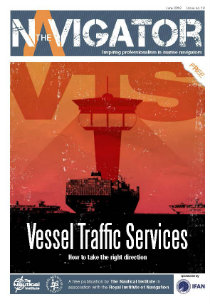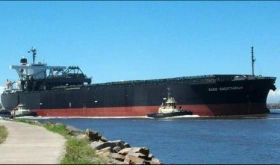Underwater-welding for marine maintenance and repair jobs bypasses the need to pull the structure out of the sea and saves much valuable time and therefore it is considered as an economical advantageous method when there is little time or due to operational requirements. The main difficulties in underwater welding are the presence of a higher pressure due to the water head under which welding takes place, chilling action of the water on the weld metal (which might change the metallurgical structures and properties), the possibility of producing the arc mixtures of hydrogen and oxygen in pockets, which might set up an explosion, and the common danger sustained by divers, of having nitrogen diffused in the blood in dangerous proportions.
Underwater welding can be generally classified as:
- Wet Welding: Wet Welding indicates that welding is performed underwater, directly exposed to the wet environment. A special electrode is used and welding is carried out manually just as one does in open air welding. The increased freedom of movement makes wet welding the most effective, efficient and economical method. Welding power supply is located on the surface with connection to the diver/welder via cables and hoses.
- Dry Welding: A dry chamber is created near the area to be welded and the welder does the job by staying inside the chamber. In this method the chamber is filled with a gas (commonly helium containing 0.5 bar of oxygen) at the prevailing pressure.
Safety
Underwater welding operations involve several hazards, such as
- lethal electrical currents,
- oxygen and hydrogen rich gases which will explode in the presence of a spark and
- electrode tip temperatures in excess of 10,000°F.
Safety measures should be taken to avoid the build-up of pockets of gas, which could result in explosions. Other areas of risk are related to the nitrogen introduced into the blood steam of the diver during exposure to air at increased pressure. Safety measures include the provision of an emergency air or gas supply, stand-by divers, and decompression chambers in order to avoid nitrogen narcosis.
Other safety measures during underwater welding operations may include the following:
- A diver is at risk to severe electrical shock when performing welding operation while only partially immersed in water. Hence, the splash zone is the most hazardous location in which a diver can be placed.
- AC power should not be used for underwater welding due to the extreme danger involved with AC current underwater. Electrical shock produced by AC current prevents voluntary relaxation of the muscles controlling the hand. Consequently, the diver may be unable to let go if his body or equipment accidentally enters the electrical circuit.
- Hydrocarbons ignite almost spontaneously in the presence of oxygen. Never allow oxygen-carrying components to come in contact with oil or grease.
- Never put down or carry an electrode holder while the power is on.
- Never change an electrode while the power is on.
- The diver must never allow any body part or equipment to come in contact with the grounded work when the safety switch is closed.
- Care should be taken with diver-carried large loose metallic items (i.e., wrenches and backpacks) to ensure no contact is made with a live electrode or the work.
Advantages of Dry Welding
- Welder/Diver Safety – Welding is performed in a chamber, immune to ocean currents and marine animals.
- Good Quality
- Surface Monitoring
- Non-Destructive Testing (NDT)
Disadvantages of Dry Welding
The chaber requires large quantities of complex equipment and much support equipment on the surface. The chamber is extremely complex.
Advantages of Wet Welding
- The versatility and low cost of wet welding makes this method highly desirable.
- Speed with which the operation is carried out.
- Less cost in comparison to dry welding.
- The welder can reach portions of offshore structures that could not be welded using other methods.
- No enclosures are needed and no time is lost building. Readily available standard welding machine and equipments are used. The equipment needed for mobilization of a wet welded job is minimal.
Disadvantages of Wet Welding
- There is rapid quenching of the weld metal by the surrounding water.
- Large amount of hydrogen is present in the weld region, resulting from the dissociation of the water vapour in the arc region. The H2 dissolves in the Heat Affected Zone (HAZ) and the weld metal, which causes cracks and microscopic fissures.
- Poor visibility.















thanks